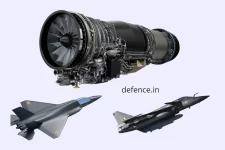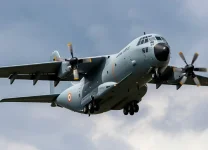- Views: 3K
- Replies: 38
In a potential leap forward for India's naval ambitions, France has proposed a collaborative project to co-develop a formidable 76,000-tonne nuclear-powered aircraft carrier. This ambitious venture, with a projected delivery date in the late 2030s, aims to equip India with a cutting-edge maritime asset while solidifying the strategic partnership between the two nations.
The proposed carrier, a behemoth with dimensions of roughly 305 meters in length and a maximum beam of 79 meters, would be a significant upgrade from India's current carrier capabilities. Some sources suggest the displacement could even reach 78,000 tonnes. Its expansive flight deck and sponsons, extending beyond the main hull, would provide ample space for aircraft operations.
With a 17,000 square meter flight deck and spacious hangars, the carrier is designed to accommodate an impressive air wing of approximately 30 Rafale and New Generation Fighter (NGF) jets. This aerial contingent would be further bolstered by two E-2D Hawkeye aircraft for airborne early warning and control, along with up to six medium helicopters for diverse missions.
This collaborative project envisions leveraging advanced technologies, including the Electromagnetic Aircraft Launch System (EMALS) and Advanced Arrestor Gear (AAG). These systems, similar to those employed on the U.S. Navy's Ford-class carriers, promise to enhance the efficiency and safety of aircraft launches and recoveries.
France proposes utilizing this design as a blueprint for India's own Indigenous Aircraft Carrier III (IAC-III) program. This move would not only streamline the construction process but also facilitate the sharing of costs and technological expertise between the two nations. The IAC-III, envisioned as a larger successor to the current IAC-I (INS Vikrant) and the planned IAC-II, would significantly bolster India's carrier fleet.
While France has expressed its willingness to provide non-nuclear materials and systems, the nuclear propulsion technology will be an exclusively Indian endeavor. The carrier will be powered by two K22 reactors, derived from the K15 model used in the French Charles de Gaulle (CDG) aircraft carrier. However, these reactors will be built by India. India is expected to utilize its own indigenous 190 MW reactor currently under development for its nuclear attack submarines and ballistic missile submarines.
The integration of EMALS, while offering significant operational advantages, represents a considerable financial investment. This addition, along with the overall scale of the project, is anticipated to strain the Indian Navy's budget. However, the acquisition of such a technologically advanced carrier is viewed as a strategic investment in India's long-term naval capabilities and its ambition to maintain a powerful presence in the Indian Ocean region.


